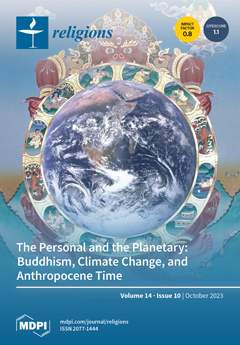Despite his significant influence, Wang Fuzhi’s perspective on Catholicism and its actual impact on his philosophical outlook have yet to be thoroughly examined. This essay aims to delve into this topic and elucidate Wang’s attitude toward Catholicism, highlighting its evolution over time. In
[...] Read more.
Despite his significant influence, Wang Fuzhi’s perspective on Catholicism and its actual impact on his philosophical outlook have yet to be thoroughly examined. This essay aims to delve into this topic and elucidate Wang’s attitude toward Catholicism, highlighting its evolution over time. In his earlier ideological developments, Wang Fuzhi adopted a staunchly critical approach to Catholicism, primarily from an ethical standpoint and through the lens of the Hua-Yi differentiation (
hua yi zhi bian 华夷之辨). He perceived Catholicism as a doctrine of Yi 夷, lacking an understanding of the proper human place within relationships. Moreover, he pointed out that Catholicism was characterized by dogmatic adherence, in contrast to the Confucian emphasis on embodying the “mean” (
Zhong 中) in practical terms. However, in his old age, Wang Fuzhi’s perspective underwent a subtle shift, spurred by the astronomical observations conducted by missionaries like Matteo Ricci. This shift prompted him to re-evaluate the Confucian concept of heaven and led him to assert that certain Catholic practices were essentially endeavors of “investigating things” (
gewu 格物). This reinterpretation encouraged individuals to explore the significance of engaging with the external world—a facet often overlooked in the context of Song-Ming Neo-Confucianism. Wang Fuzhi embarked on an endeavor to integrate Catholicism into the Confucian framework. He identified select Catholic ideas that aligned with his own viewpoint and incorporated them into the doctrine of
qi. Despite his lifelong dedication to Confucianism, the challenges posed by Catholicism and the activities of missionaries compelled him to reassess and, in some instances, embrace new ideas that deviated from his predecessors’ stance.
Full article





